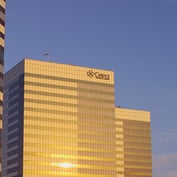Consider these findings, which have been developed over 16,000 performance improvement engagements;
- Front-line supervisors or team leaders are not proficient at supervising and/or leading. Less than 50 percent of this group routinely engages in the seven active management behaviors that universally define their position. Of this group, less than 50 percent have a demonstrated competence. This equates to their respective employee groups being actively supervised 25 percent or less of the time.
- Most workforces are self-directed. If the workforce is not being actively supervised 75 percent of the day, they will take it upon themselves to set their own agenda. In other words, they will do what they want, when they want, how they want and if they want. This is not to suggest that the workforce is incapable, incompetent or unwilling; quite the contrary. Most individuals that comprise the workforce believe they are doing their best under the circumstances, working hard, etc. Unfortunately, the level of process variability that results from dozens of personal agendas is simply too complex to manage.
- Planning at the departmental level is primarily based on hindsight, not foresight. Planning at the departmental level becomes very difficult, if not impossible, if there is limited, useful real-time feedback that flows from the workforce to the first-line supervisor to the department manager and back. As a result, departmental planning decisions are typically made on a historical basis, typically using work standards that were developed at some point in the past. It often turns into a forced exercise in tweaking the suboptimal.
Certainly one of the major root causes of the above findings is that most performance improvement initiatives focus primarily on the what and the how, but don’t pay enough attention to the who, when, where and why. The best plan is only as good as its execution, so it’s not sufficient to simply map the processes (the what) and align the technologies (the how). You must also take into account the organization’s ability to adapt, embrace and execute the change. At the very minimum, creating the appropriate environment for change requires that you;
- Define the future state roles and skill requirements
- Conduct a current state skills inventory analysis and identify gaps
- Identify the training and coaching requirements needed to fill the gaps
- Populate the future state organization and work through the logistics
- Implement a Management Operating System to ensure that the correct operating metrics needed to manage and measure the improvements on a real-time basis are embedded into the operating culture
Additionally, you must actively and aggressively market the desired change to the affected employee group by;
- Creatively interpreting complex business issues to accelerate understanding, acceptance and action
- Creating a series of “Aha!” moments that help people get it and further spur them to action
- Providing the support, skills and reinforcement for people to behave differently
- Actively coaching and providing real-time feedback and guidance in a non-threatening manner
- Anticipating areas where future slippage may occur and applying solutions to promote sustainability
Most senior executives would be skeptical if told that they could improve operating performance (as measured by revenue, cost, quality and service levels) by 10–30 percent in less than twelve months and sustain and improve on that performance for years to come, but it is nonetheless true. Even in cases where companies have gone through a series of performance improvement initiatives, there is a persistent failure to institutionalize the improvements at the workforce level and provide the tools and coaching necessary to manage and maintain the improvements. Optimizing human capital is a strategic imperative that is available to all, but overlooked by most. Executed correctly, it can provide a significant competitive advantage for many years to come.
See also:








 April 29, 2013 at 03:08 PM
April 29, 2013 at 03:08 PM










